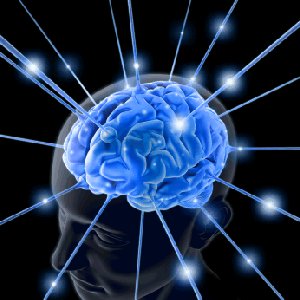Critical Thinking: Fallacies from Relevance XI
Fallacies from Relevance
A fallacy from relevance occurs when the response to a conclusion or an argument is not relevant to the conclusion or argument. These are fallacies that ignore the point at hand and attempt to derail the argument by bringing irrelevancies into the arena of the debate. In this post, I will discuss the Fallacy of the Weak Analogy, sometimes called the Fallacy of the Questionable Analogy and sometimes mistakenly called a False Analogy and discuss the Analogy of Necessity.
Fallacy of the Weak Analogy
Arguments by analogy rest on a comparison. An argument by analogy is only as strong as the comparison on which it rests. The weak analogy fallacy (also “questionable analogy”) is committed when the comparison is not strong enough.
Their logical structure is this:
(1) A and B are similar.
(2) A has a certain characteristic.
Therefore:
(3) B must have that characteristic too.
Obviously, and in many cases, drawing comparisons by way of analogy is a valid form of argumentation, particularly when A and B are strongly analogous. For instance, in comparing a Red Delicioius Apple to a Golden Delicious Apple. One is comparing apple A to apple B and, strictly speaking, comparing apples to apples. This is probably not a fallacy because the two types of apples, while different, are still strongly analogous.
When one compares apples to oranges, however, even though both are fruit, this may form the basis of a questionable analogy or weak analogy fallacy dependent upon what property is being compared. Because apples and oranges are not as strongly analogous as apples and apples, there is a danger of a logical fallacy in any arrived upon conclusions.
The more analogous A and B are, the less danger of a logical fallacy in the argumentation or the conclusion. Also, the more specific the property being compared, the stronger the conclusion.
In comparing apples to oranges, one might posit that both are fruit; both need sunshine, soil, and water in order to grow; both need to cross-pollinate in order to seed; and all of these comparisons are strongly analogous. If one were to conclude that apples and oranges looked similar, tasted similar, acted in similar ways in recipes, thrived in similar regions, and shared a similar cost at market, these would be less strong comparisons.
This fallacy is often called a False Analogy which is not accurate. Comparing apples to oranges is sometimes weak and sometimes questionable, but a basis for analogy may still exist. Comparing apples to water, or apples to rocks, or apples to novels, or apples to battleships might form the basis for a False Analogy. In other words, if there exists little to no basis for comparison, there is no basis for analogy. In those cases, drawing comparison is based upon false analogy.
Further examples of the weak analog fallacy are the analogies that are so often drawn comparing behaviors of men and women. In the last 20 years, medical research ranging from psychotherapy to 3-D brain modeling has turned many of the fallacious social notions of the 1960’s and ’70’s firmly on their ears. The fact is that there are stark and very real physiological and emotional differences between the sexes, and those differences manifest themselves in quantifiably different ways as we express ourselves very differently at emotional and social levels.
Therefore, while analogies about very specific properties of either sex may be strongly analogous, most are in fact largely questionable and fallacious. To say that men and women are each human beings, have two arms, two legs, five fingers on each hand, five toes on each foot, two eyes, hair, eat similar foods, require sleep, are warm-blooded mammals, etc. — these are all strongly analogous.
However, generally speaking, men and women to not experience or cope with depression in the same ways, nor do men and women manifest symptoms of depression in ways that are even closely similar. Men and women possess entirely different triggers and mechanisms of sexual desire and response. Men and women feel entirely different imperatives when faced with crisis or loss. Men and women place severely different priorities on various social activities. So, to say that men and women think and problem solve in similar ways or experience emotions in similar ways is probably fallacious.
Analogy of Necessity
Often times, questionable analogies must be drawn since A exists but no strongly analogous B exists. For example, earth only has one moon. We cannot compare earth’s moon A to earth’s moon B since there is no moon B that orbits our planet. We therefore must, of necessity, compare our moon to other planetary moons which immediately makes for a questionable analogy.
The analogy is strengthened when the scope of the comparison is limited and the similarities are the only property under study.
In the debate between proponents of the scientifically supported Biblical account of creation versus the religious dogma of Darwinism, Darwinists often incorrectly claim that William Paley’s famous teleological argument from design put forth in his Natural Theology, is a weak analogy when, in fact, Paley’s argument is an analogy of necessity.
Paley likened the universe to a watch. If we were to stumble across a watch in a natural environment, lying on a heath, to cite Paley’s example, then we would instantly know, because of its specific properties of order and complexity, that it was designed because, in the case of a watch, we take these properties to constitute evidence of design because order and complexity are the marks of design.
Like a watch, he said, the universe consists of many complex parts functioning in harmony towards some useful end. In a watch the various parts are ordered such that they measure time; in the universe, such that they support life. The two are, in this respect, analogous.
If order and complexity constitute evidence of design in the case of a watch, then they must also constitute evidence of design in the case of the universe. The case of the watch thus illustrates the fact that the order and complexity of the universe is evidence that the universe was designed.
The inference from the specific properties of order and complexity of a watch to its being designed is not dependent on knowledge of how watches are made. If we were to stumble across a watch in a natural environment, then we would instantly know that it was designed even without any knowledge of how watches are made or where watches come from. It is therefore no objection to Paley’s argument that we know how watches are made but do not know how universes are made. The specific properties of order and complexity are independently sufficient to support the inference of a designer, even without any knowledge at all of the origins of either the watch or the universe.
Nor is it an objection to Paley’s argument that the flaws in the universe, the disorder or failure to accomplish its purpose, count against the claim that it is designed. A watch is broken, or runs slow, was still designed and ordered complexity still suggests design; the same must surely hold for the universe.
Not only can we infer from the analogy between the specific properties of order and complexity of a watch and the specific properties of order and complexity of the universe that the universe has a Designer, we can also infer something about what this Designer is like. The universe is not only ordered and complex in the same way as a watch, but it is ordered and complex on a much grander scale. The order and complexity of the universe far exceeds that of a watch, and we may therefore infer that the designer of the universe is correspondingly greater than designers of watches.
We can easily observe that the universe consists of many different parts each demonstrating the specific properties of order and complexity and functioning in harmony to accomplish a purpose. Therefore, by analogy, we can have reason to believe that it was created for that purpose by some intelligent agent — specifically, God.
While we can easily compare watches to watches, but there is only one universe. It is obvious that Paley is not comparing a watch directly to a universe, but rather the specific properties of order and complexity in a watch and in the universe.
Darwinists call this a false analogy, which it is not. There exists a basis for comparison.
Darwinists say that there are better alternate analogies available, which is irrelevant since any alternate analogy would also support Paley’s conclusion.
And Darwinists say that arguments from analogy are too limited in the kinds of conclusions they can support, which is also a rather desperate grab at a very thin straw of argumentation since even if it were true, it does not refute the limited conclusions that analogies do support.
 Conclusion:
Conclusion:
Recognizing truth is an essential survival tool for the mind, and ultimately, for the soul. It is vital that believers weigh the so-called “wisdom” of the world on the perfect scale of authoritative scripture. (I Corinthians 1:19-21)
Teaching our children the ability to recognize fallacies of this type, giving them the intellectual skill to deconstruct these types of arguments, will ensure that the arguments they, themselves, will one day make are at least valid and thoughtfully arrived upon. It will also assist them to investigate more deeply into the conclusions espoused by those in the world whose motives might not come from love and might not have been very carefully arrived at or well researched.
Hallee
I’m so grateful for your visit, today.
You would bless me if you added me to your ![]() feed reader or subscribed
feed reader or subscribed  via email.
via email.
You can also become a fan on ![]() Facebook or follow me on
Facebook or follow me on ![]() Twitter. I would love to see more of you!
Twitter. I would love to see more of you!


